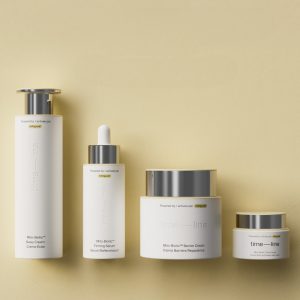Amid the consternation over the coronavirus pandemic, news of an important health research breakthrough was eclipsed.
It came in the form of an article entitled “Personal aging markers and ageotypes revealed by deep longitudinal profiling” in Nature Medicine.
We all age, and yes, we all eventually die. The process by which that occurs is highly individual, akin to snowflakes or fingerprints—none of which are precisely identical.
The ancient Greeks grappled with this question in the drama Oedipus Rex: Confronted by the Sphinx, Oedipus is challenged to solve the riddle “What creature walks on four legs in the morning, two legs at noon, and three legs in the evening?” (The solution is the human, who crawls as a baby, strides upright in maturity, and uses a cane in old age.)
In ancient Ayurvedic medicine, physiologic traits conform to distinct archetypes or doshas: pita, vata, and kapha. Similarly, Traditional Chinese Medicine traces the roots of pathology to imbalances of liver, heart, spleen, or kidney chi.
Is the process of senescence random, with infinite permutations, or does it follow discrete, identifiable patterns?
The Stanford University authors of this scholarly investigation believe that at least four “ageotypes”—and possibly more—account for age-related decline and death.
They monitored 106 individuals aged 29-76 over a period of four years. They took advantage of advances in “omic” technology—high throughput analyses that can characterize hundreds of metabolites simultaneously. These go way beyond our usual battery of blood and urine tests that we routinely perform during checkups.
For example: Had your 2-aminophenol sulfate checked lately? No? Didn’t think so.
Tests like these are not yet ready for primetime, but eventually may be scaled and commercialized for health assessments (we can’t wait!).
Additionally, recognition was accorded to stool microbiome profiles, since we now appreciate the vital role our intestinal bacteria play in health and disease. Certain patterns of diversity or dysbiosis reflect predilections to age-related vulnerabilities.
The microbiome analysis was not limited to stool sampling; nasal swabs revealed the individual characteristics of the flora inhabiting subjects’ respiratory tracts, which have implications for health and disease.
It’s hard to imagine how complex this is; hundreds of variables were assessed simultaneously in scores of individuals whose tests were repeated sequentially over several years.
Now, you might expect that with all that data you would get a random scattergram of discrete unrelated points. But instead, the researchers found the information sorted itself into discrete patterns. Using advanced techniques of informatics, enabled by artificial intelligence and machine-learning, they divided the agers into four distinct groups: metabolic, immune, hepatic (liver), and nephrotic (kidney).
Metabolic agers, for example, might be more prone to insulin resistance, with concomitant weight gain, blood sugar abnormalities, and cardiovascular risk.
Immune agers might be predisposed to inflammatory changes or autoimmunity.
Hepatic agers, even if they didn’t suffer serious diagnosable problems like fatty liver or cirrhosis, showed impaired liver capacity to process toxins and to generate an array of life-sustaining compounds.
Kidney agers showed not only declines in filtering capacity but also dysregulation of the renal chemical messengers responsible for blood pressure control and electrolyte balance.
It’s possible that further studies will reveal additional ageotypes. For example, if certain individuals are especially susceptible to disorders of the heart muscle, they might form a separate cohort of “heart agers”.
Might there not be “brain agers”, “bone agers”, and “muscle agers”?
Our friends at NTFactor suggested an addition of “energy agers”, involving mitochondria.
And, by no means were the ageotypes mutually exclusive; there was lots of overlap among individuals. For example, a person with hallmarks of metabolic aging might also simultaneously exhibit characteristics associated with immune, kidney, and hepatic aging.
Some of the study participants embarked on diet and exercise regimens during the observation period; there were encouraging signs that these interventions actually forestalled or even reversed some of the markers associated with aging.
COMMENT: This is a highly ambitious but rudimentary effort to bring advances in “big data” to health assessment. Admittedly, it’s a vast improvement over the simplistic annual blood and urine tests we use to forecast health problems. The routine CBC, chemistries, lipid panels, thyroid functions and urine tests we perform are relatively insensitive and only highlight problems when it’s usually too late to undertake prevention.
And don’t expect tests like the “ageotype” profile to become routinely available for a long time. The thousands of analyses performed on each patient, despite new economies generated by technical innovations, still cost a fortune; even if they were to be made available on some kind of “luxury panel” for affluent optimizers willing to pay the freight, they would still be subject to restrictive FDA and state approval of lab tests. Many plausible innovative diagnostic panels used by integrative physicians are prohibited in highly-regulated states like New York, where I practice.
But efforts like this Nature Medicine ageotype study herald a new era of sophisticated functional medicine in which hundreds and even thousands of discrete pieces of data will become integrated into a coherent picture beyond the capacity of even the most sophisticated clinician’s ability to eyeball pages of test results. Data analysis will discern patterns where only seeming chaos prevailed.
Once we identify patterns of dysfunction, the challenge will be to target interventions to address emerging problems before they become irremediable. Some, no doubt, will be drugs—it’s inevitable because of the rich incentives available to the pharmaceutical industry in the name of “precision medicine”. There’s a veritable Gold Rush underway.
But, as became clear with the current study, it’s likely that research like this will pave the way for validating how natural approaches—diet, exercise, sleep optimization and stress reduction, along with targeted deployment of plausible nutraceuticals—can slow the aging timetable, not just in a general fashion, but in a manner customized to an individual’s unique vulnerabilities.
That’s the hope. Big Data is creating a revolution in medical progress. But after all the hoopla, it’s likely to confirm some of the age-old verities on which natural medicine is based.







